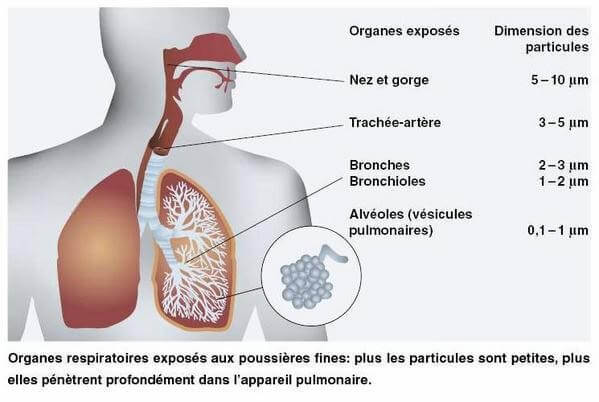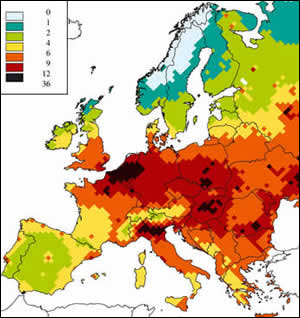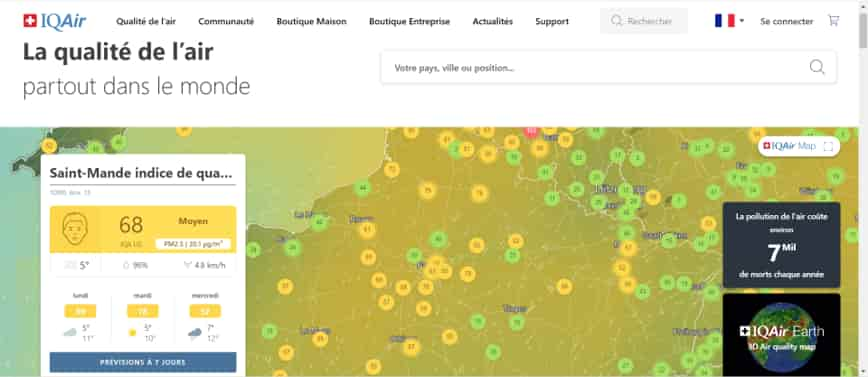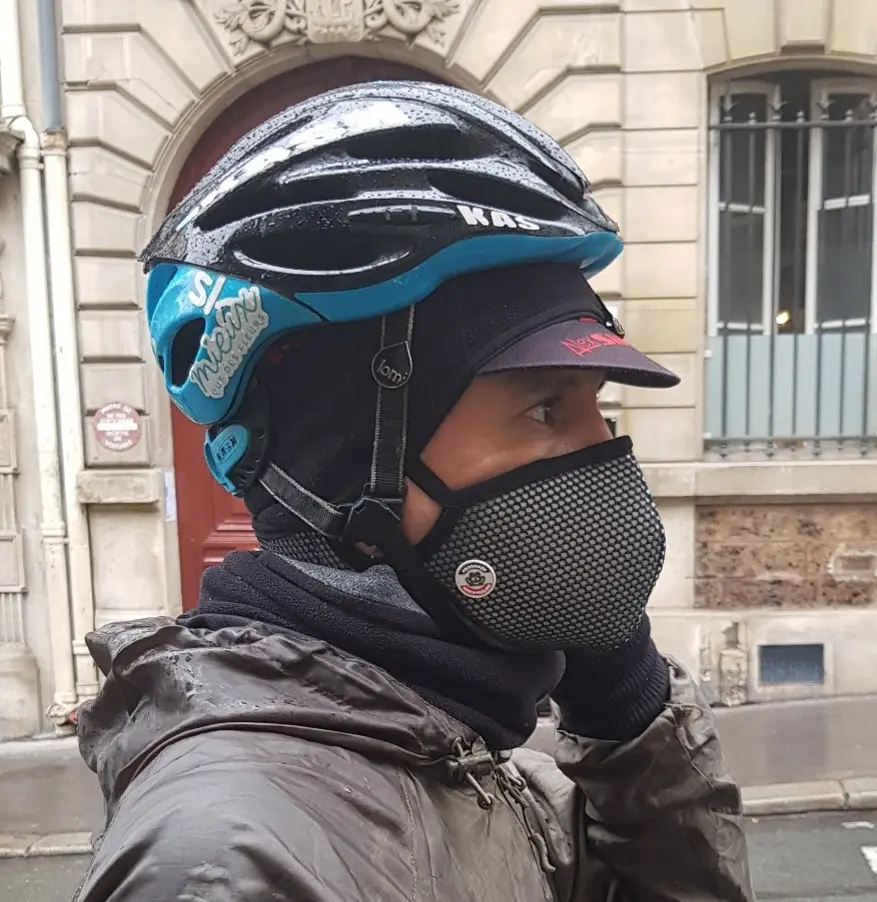
Fine particles, microparticles, nanoparticles, dusts, droplets… How do you know what they are? Where do they come from and what are their dangers? Finally, how are they measured and how can we protect
What are fine particles?
Fine particles are a category of solid or liquid particles suspended in the ambient air with a diameter of less than 2.5 microns (µm). Within this category, known as PM 2.5 (from the English Particulate Matter), we can distinguish between PM 1 with a diameter of less than 1µm, known as ultrafine particles, and PM 0.1, the nanoparticles smaller than 0.1µm. To put it simply, these are extremely fine dusts.

How are fine particles created?
Although they can of course be of natural origin (volcanic eruptions, forest fires, chemical reactions in the atmosphere, natural particles carried by the wind such as pollen, moulds in homes, bacteria and viruses, etc.), these dusts are often the result of combustion which is not total and which generate what are known as “unburnt”
When we see smoke coming out of a chimney, a muffler or when we spit out cigarette smoke, it is because there are, in addition to water vapour, a lot of particles, of varying sizes. Industrial activity, road traffic (exhaust fumes, brake pad dust, tyre wear, road wear, etc.), heating (wood, coal, fuel oil), solvents used in glues, furniture or household products are all sources that produce toxic fine particles.
The most hazardous are sulphur dioxide, ozone, nitrogen monoxide and nitrogen dioxide.
What are the dangers of fine particles for humans?
We need to breathe 15,000 litres of air a day to provide our bodies with the oxygen they need. This exposure makes air the main threat to our lungs when it is polluted.
Unlike the heavier dust that falls to the ground, fine particles remain suspended in the air as aerosols. This is why they are very likely to enter the respiratory tract. Depending on their quantity and toxicity, these colourless and odourless enemies can cause health problems for those who breathe them, ranging from simple irritation to cardiovascular accidents, chronic respiratory diseases, damage to the body’s defences, microbial infections, diabetes, lung cancer and even mental health.

According to the WHO (Risk Assessment Summary, 2005 update), more than 2 million premature deaths worldwide each year can be attributed to the effects of outdoor air pollution in cities and indoor air pollution.

Source: International Institute for Applied Systems Analysis
How are fine particles measured?
Pollution is measured in micrograms per cubic metre of air and, depending on the type of particle, a maximum number of days exposed to it must not be exceeded.
The WHO (World Health Organisation) recommends exposure levels (concentrations and durations) below which no harmful effects on human health have been observed, which can be viewed at IQair website.
See the article on air quality monitoring applications

This type of map has been available for several years on an annual scale and every day for the previous day. They are now available on an hourly basis, in real time, for most of large cities all over the world.
How to protect yourself from fine particles ?
Many studies show that protection against fine particles, such as caulking, is not 100% effective because they infiltrate everywhere. The only effective option is to reduce their emission as part of the ecological transition (CSR approaches for companies, development of soft mobility, use of electric vehicles, development of non-polluting public transport, speed limits, etc.).
It is possible to reduce indoor air pollution in homes, offices or cars by airing them out by opening the windows wide at least 10 minutes a day and during activities such as cleaning, DIY, cooking, etc. The aim of this natural ventilation is to dry the air and surfaces. The purpose of this natural ventilation is to dry out the air and surfaces.
It is also important to ensure good ventilation of the dwelling in order to renew the air continuously, whether natural (air vents and grilles) or mechanical (controlled mechanical ventilation or CMV) and to maintain them regularly.
Outside, the best solution to protect yourself is to use a filtering mask, especially when cycling or riding a two-wheeler in the middle of road traffic. It is also important to ensure that the filtering level (PM 2.5 minimum) and the tightness of the mask are adequate so that a maximum amount of inspired air passes through the filters. See the article on how to choose a pollution mask.
What anti-pollution mask best filters fine particles ?
Frogmask masks are equipped with FFP2 filters, a standard that imposes a minimum of 94% filtration of the air inspired by particles of 0.4µm. Highly breathable and limiting the production of mist thanks to the double nasal stem system (mask and filter), they are suitable for both occasional and intensive use, such as Juan, a professional courier at District Cargo in Paris.
